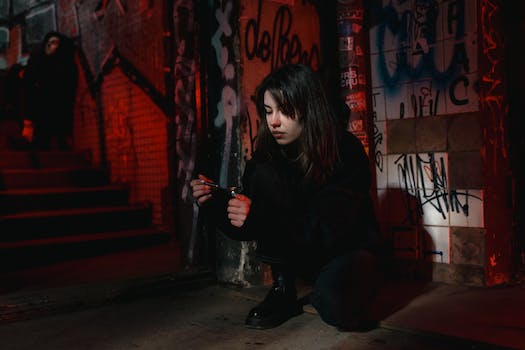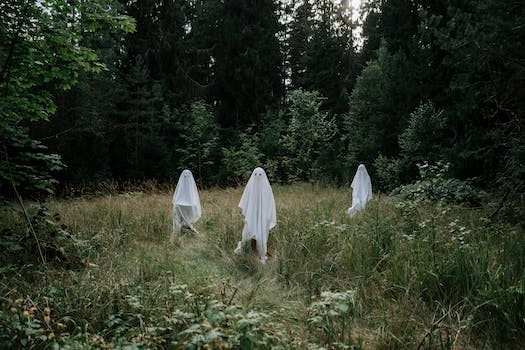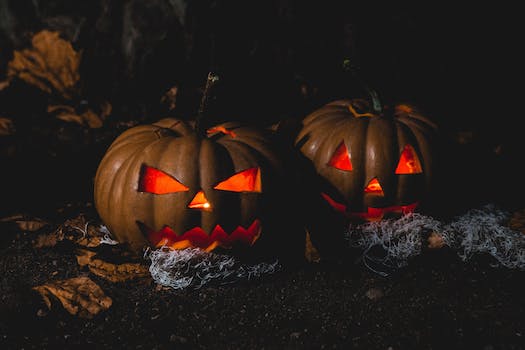Harrowing and fascinating, the world of horror films has been capturing viewers for decades. Horror films’ capacity to keep audiences on the edge of their seats has made them a major moneymaker. In this in-depth analysis, we’ll look at the many different types of horror films, some of the most memorable examples of the genre, and the effect they have on viewers. In this terrifying adventure, you will encounter the macabre and the suspenseful in equal measure.
- 1. Introduction
- 1.1. What is a horror movie?
- 1.2. Popularity of horror movies
- 1.3. Why people love horror movies
- 1.4. Evolution of horror movies
- 1.5. Purpose of movie reviews
- 2. Elements of a Horror Movie
- 2.1. Setting
- 2.2. Plot and storyline
- 2.3. Characters
- 2.4. Visual effects and cinematography
- 2.5. Sound and music
- 3. Types of Horror Movies
- 3.1. Psychological horror
- 3.2. Supernatural horror
- 3.3. Slasher horror
- 3.4. Monster horror
- 3.5. Found footage horror
1. Introduction
The suspense and terror of a good horror film have always been major draws. Recent films like “Get Out” and “Hereditary” continue the tradition of classics like “Psycho” and “The Exorcist,” while also expanding on the genre’s capacity to shock and amuse. In an effort to shed light on the horrific genre of horror films, this review will delve into their motifs, subgenres, and effects on audiences. This article will present a detailed study of some of the most terrifying works in the horror genre, catering to fans of both gory gore and psychological suspense.
1.1. What is a horror movie?
A horror film is a type of film that intentionally creates an atmosphere of suspense and anxiety in its viewers. Its plots frequently involve supernatural or paranormal occurrences, psychological suspense, or extreme violence. The protagonists of horror films are generally horrifying monsters, haunted houses, otherworldly beings, or psychotic murderers. These films prey on our most primitive fears and urges, keeping us on the edge of our seats and giving us nightmares. The first examples of the genre can be traced all the way back to the silent film era. Slasher flicks, found-footage movies, and otherworldly horror are just a few examples of how horror films have developed and branched out over the years. Because of their powerful emotional resonance and exciting content, they continue to draw in viewers from all over the world.
1.2. Popularity of horror movies
Harrowing stories and horrifying protagonists have helped propel horror films to mainstream success. Horror movies are unlike any other genre in their capacity to terrify and intrigue their audiences. The human interest in the mysterious and the excitement of being afraid contribute to the success of horror films. The ever-evolving special effects and cutting-edge filmmaking techniques have also contributed to the genre’s meteoric rise in popularity. This essay will delve into the fascinating world of horror and investigate the many factors that contribute to the genre’s great popularity.
1.3. Why people love horror movies
It’s easy to see why scary movies have captivated people for so many years. The adrenaline-pumping fear these films create is both fascinating and enjoyable. Although some may question the sanity of those who seek out horror films, there are several reasons why people enjoy them. This essay will discuss what makes horror movies so intriguing to many people, including the psychological, adrenaline-pumping, and therapeutic components.
1.4. Evolution of horror movies
Since their origin, horror films have gone a long way, adapting to the shifting preferences and fears of moviegoers. The suspense film genre has evolved from the early days of silent cinema to the present day of special effects and psychological thrillers. In this article, we’ll trace the development of horror films and examine the major developments and recurring themes that have formed the genre.
1.5. Purpose of movie reviews
Reviews of films are essential to the advancement of the industry. They help people decide whether or not to see a film by giving them information and insights into the film. Reviews are a common way for moviegoers to learn about a film’s quality, genre, and general appeal. Reviews are especially important when it comes to scary movies. They inform audiences as to whether or not a horror film is actually scary or relies too heavily on cheap scares. Additionally, movie reviews can assist in evaluating the qualities and shortcomings of a horror movie, including its plot, visual effects, actor performances, and overall atmosphere. Those who enjoy the chills and thrills of the horror genre can make the most of their time and money by reading reviews before deciding which films to see and which to forgo.
2. Elements of a Horror Movie
Fear and terror are two emotions that horror films are known to tap into well. They frequently incorporate details that enrich the viewer’s emotional investment in the film. These are essential for making the viewer’s reality feel truly scary.
The atmosphere of a horror film is crucial to the success of the genre. The atmosphere of a horror film relies heavily on its backdrop, which can be anything from a haunted mansion to a foreboding forest or even an abandoned asylum. The audience is kept on the edge of their seats by the tension and suspense it generates.
Scare tactics have a significant role as well. These are scares that come out of nowhere, startling the viewers. Quick cuts, jarring music, and the abrupt entrance of frightening figures or things are the hallmarks of the jump scare. They are utilized to increase the intensity of terror because of the adrenaline rush they produce.
In horror films, the antagonist or villain often plays a pivotal role. The antagonist is the driving force of the plot and the source of the horror, be it a supernatural being, a serial killer, or an angry spirit. When viewers see the antagonist actively pursuing the heroes, they get emotionally immersed in the plot.
Furthermore, suspense and tension are crucial to the success of a horror film. The audience is kept interested and on edge through a combination of deliberate pacing, creepy music, and a lack of resolution. Putting the protagonists in perilous circumstances will make the audience worry for their safety.
A common feature of horror films is graphic violence and bloodshed. It’s meant to startle and disgust, heightening the film’s overall unsettling quality. Dismemberment, blood, and other graphic depictions of violence all add to the dread and stick with the audience.
In conclusion, horror movies rely on several factors to create a horrific reality for its audiences. All of the elements—the environment, the antagonist, the suspense and tension, the violence and gore—contribute to the overall effect of chilling intensity.
2.1. Setting
Harrowing tales of the supernatural, psychological horrors, and spine-tingling suspense have been gripping audiences for decades. These films rely on a few standard techniques to create an effective atmosphere of dread. In this article, we’ll take a look at what makes a horror film tick and what makes it a hit with audiences.
1. Atmosphere: Setting the correct tone for a horror film is essential. Haunted houses, dilapidated asylums, and desolate forests are the perfect places to up the tension and suspense. The use of effective lighting, sound effects, and music can do wonders for setting the mood and heightening the suspense.
2. Tension and sudden shocks (or “jump scares”): These two elements are essential to the success of a horror film. The audience is on the edge of their seats as they wait for the next horrific event to occur. Jump scares, whether in the form of sudden, loud noises or stunning pictures, are intended to create an instant shock, usually followed by a swift release of tension.
Thirdly, Psychological Fear: An effective horror film plays on our most primal phobias. It delves into the realm of psychological terror, messing with our heads and hearts. Unsettling ideas, terrible images, and mind-bending turns have the potential to make a long-lasting impression on the reader.
A sense of otherworldly dread is added to horror films by the presence of supernatural beings like ghosts, demons, vampires, and the like. Seeing them makes you question reality and gives you chills down to your bones.
Although not necessary for all horror films, gory scenes and explicit violence can heighten the impact of the film’s shock value. Visceral and unsettling terror can be achieved through the use of gore and realistic special effects.
Many horror films’ antagonists become instantly recognizable icons of the subgenre. Freddy Krueger, Jason Voorhees, and Michael Myers are just a few examples of terrifying antagonists who have become synonymous with their respective horror film series.
Horror films frequently include a “final girl,” or the lone protagonist who faces and vanquishes the villain. This persona is frequently an embodiment of courage, fortitude, and ingenuity in the face of overwhelming adversity.
By expertly blending these components, horror movies continue to shock and intrigue people, leaving a la
2.2. Plot and storyline
The screenplay and plot of a horror film are essential to its ability to captivate and terrify its target demographic. It establishes the film’s mood and atmosphere and generates tension and suspense. A film’s narrative is more than just what happens onscreen; it’s also what stays with viewers long after the credits roll.
The ingredients of a good horror movie plot usually include some unsettling or terrifying themes. Supernatural forces, psychological terrors, or gory monsters are often the focus of the story when a group of humans find themselves in a terrifying predicament.
The ‘haunted house’ is a typical setting for scary movies. As the players investigate the hidden passages and chambers, they get increasingly unnerved by the place’s sinister past and present. The ‘cursed thing’ or ‘evil artifact’ that triggers a chain reaction of terrifying occurrences when discovered or possessed is another common device.
Furthermore, horror movies generally feature themes of survival and the fight against evil. The protagonists are typically regular people who are put through harrowing ordeals that truly put their mettle to the test. As they strive to figure out what’s causing the horrors they’re experiencing, they’re put through a succession of terrible situations in which they risk losing friends and loved ones.
Horror films rely heavily on suspense and anxiety to achieve their desired effect. Cinematic tension and suspense are purposefully constructed by careful use of editing, music, and editing. The plot is designed to keep the audience on the edge of their seats, wondering what will happen next, whether through a gradual but relentless buildup or a succession of strong and unexpected scares.
A successful horror film’s plot and plotline should make viewers uncomfortable, horrified, and terrified by the end. It should stay with them, like a bad dream, long after the credits have rolled. As a result of how well its components integrate, the horror film genre has maintained its popularity around the world.
2.3. Characters
A horror film relies heavily on its characters to ratchet up the suspense and establish a sense of foreboding. These individuals usually have their own unique qualities and characteristics that enrich the plot. The main character, who often faces some kind of supernatural or life-threatening threat, is a staple of the horror film genre. Typically, the hero is a regular person who has to overcome extraordinary obstacles and defeat evil. The antagonist, who is typically presented as a villain or monster, is another significant figure. The antagonist’s role is to make the protagonist nervous and troubled. Relationships and emotional ties are provided by supporting individuals including friends, family, and mentors. They can also enhance tension and fear by playing the role of victims or sacrifices. The supporting characters in a horror film, be they scary neighbors, odd strangers, or paranormal experts, all serve to heighten the audience’s dread and confusion. The story is strengthened by the inclusion of these contrasting personalities, and viewers are guaranteed a genuine sense of terror.
2.4. Visual effects and cinematography
The cinematography and special effects in a horror film are two of the most important elements in making it scary. All of these contribute to a more tense and terrifying environment for the audience to experience.
The eerie and terrifying components are brought to life with the use of special effects. With the help of special effects, scary scenes like ghostly appearances, ugly monsters, and bloody deaths become more arresting and unsettling. Filmmakers are now able to produce realistic and scary pictures with the help of cutting-edge technology and talented artists.
However, cinematography is concerned with how images are taken and composed. Shot composition, lighting, and camera movement all play a role in establishing the film’s prevailing emotional tone. The cinematography of horror films is notorious for its use of shadows, low lighting, and odd camera angles to heighten the audience’s sense of unease and anticipation. Filmmakers can heighten the sense of danger and uncertainty by employing methods like as wide shots, extreme close-ups, and shaky handed camera movements.
The spectator might be transported to a nightmare realm where anything is conceivable thanks to well-executed visual effects and cinematography. Together, they create an atmosphere of total immersion, the kind that makes horror movie fans jump in their seats in true terror.
2.5. Sound and music
Sound and music play a crucial role in creating the eerie atmosphere of a horror movie. They enhance the suspense, build tension, and evoke fear in the audience. The right combination of sound effects, music, and silence can truly immerse viewers into the terrifying world of horror.
One of the key elements of sound in horror movies is the use of ambient noises. These can include creaking doors, footsteps, howling wind, or distant screams. Such sounds create an unsettling environment and keep the audience on edge, anticipating something dreadful.
In addition to ambient noises, jump scares are another common tactic used in horror films. These sudden, loud sounds are designed to startle viewers and elicit a frightful reaction. Whether it’s a sudden burst of music, a piercing scream, or a jarring sound effect, jump scares are meant to catch viewers off guard and intensify the fear factor.
Furthermore, music plays a significant role in setting the mood and tone of a horror movie. Haunting melodies, dissonant chords, and ominous orchestral arrangements can create a sense of impending doom. The right musical score can heighten the suspense and make even the simplest scenes feel unnerving.
Silence, on the other hand, can be just as impactful as sound in horror movies. Strategic use of silence can create a sense of emptiness and make the audience feel vulnerable. It can also be used to build anticipation before a scare, as the absence of sound can amplify the shock value when it finally arrives.
In conclusion, sound and music are essential elements of a horror movie. They contribute to the overall atmosphere, enhance fear, and manipulate the emotions of the audience. Whether it’s through chilling ambient noises, well-placed jump scares, haunting music, or strategic silence, these elements work together to create a truly terrifying cinematic experience.
3. Types of Horror Movies
There are various types of horror movies that cater to different tastes and preferences. These genres are known for delivering spine-chilling thrills and keeping audiences on the edge of their seats. Here are some popular types of horror movies:
1. Supernatural Horror: This genre explores the realm of the supernatural, including ghosts, demons, and otherworldly entities. It often involves haunted houses, possessions, and paranormal activities.
2. Psychological Horror: These movies focus on the psychological aspects of fear, playing with the viewers’ minds and creating tension through suspenseful storytelling. They delve into the inner fears and anxieties of the characters.
3. Slasher Horror: Slasher movies are known for their intense violence and gruesome killings. They usually involve a psychopathic killer hunting down and brutally murdering a group of people, often teenagers.
4. Monster Horror: This genre features terrifying creatures such as vampires, werewolves, zombies, or other monstrous beings. The movies showcase the struggle of humans against these formidable creatures.
5. Found Footage Horror: Found footage movies are presented as if they were discovered recordings of real events. They add a sense of realism and immerse the viewers in a terrifying experience, often involving supernatural or paranormal elements.
6. Body Horror: Body horror films focus on the grotesque and disturbing transformations or mutilations of the human body. They explore themes of decay, mutation, and physical torment.
7. Sci-Fi Horror: This genre combines elements of science fiction and horror, incorporating futuristic settings, advanced technology, and often extraterrestrial threats. It offers a unique blend of fear and imagination.
These are just a few examples of the diverse types of horror movies that exist within the genre. Each type offers a distinct experience and caters to different fears and interests.
3.1. Psychological horror
Psychological horror is a subgenre of horror movies that seeks to inspire fear and anxiety by abusing the viewer’s psychology. Psychological horror movies, as opposed to those that rely on gore and jump scares, explore the emotional and mental aspects of terror. Topics like schizophrenia, paranoia, and the shadowy corners of the human mind frequently appear in films of this genre. The terror in psychological horror films comes from the audience’s inability to escape the film’s grim setting. It exerts an effect on the audience that lasts long after the film has concluded.
3.2. Supernatural horror
Subgenre of horror films that uses supernatural or paranormal aspects to create a terrifying atmosphere. The villains in such films frequently come from the realm of the supernatural, such as ghosts, demons, witches, vampires, and the like. Supernatural horror uses the audience’s irrational fears and ideas about the afterlife to elicit an emotional response.
Supernatural horror films frequently use the supernatural to push the limits of possibility and cast doubt on the reality of the world outside the camera’s view. Filmmakers in this genre depend extensively on foreboding environments, creepy music, and other sensory elements to put viewers on edge. The supernatural forces are generally shown as powerful and wicked, capable of creating chaos and destruction in the lives of the characters.
Subgenres of supernatural horror movies include those focused on ghosts, demons, haunted houses, witches, and even slashers from beyond the grave. Different subgenres of supernatural horror provide a fresh take on the same old shocks and thrills.
Supernatural horror films have the power to dig into our innermost fears and leave us with a lingering sense of dread long after the credits roll, whether the film has an angry ghost out for retribution, a demonic possession, or a haunted house with a bad past.
3.3. Slasher horror
Slasher horror refers to films in which a psychotic killer follows and murders his or her victims. There is a lot of blood and gore with people getting killed in these flicks. Slasher horror films are known for their use of masks and costumes for their killers, which heightens the suspense and mystery. Halloween, Friday the 13th, and A Nightmare on Elm Street are just a few examples of successful slasher horror films. Since the 1970s, slasher films have been a mainstay of the horror genre, and for good reason: they never fail to excite and suspense viewers.
3.4. Monster horror
The subgenre of monster horror is widely represented in the horror film industry. Films in this genre frequently feature monstrous antagonists with mythological or supernatural roots. Vampires, werewolves, and zombies are just a few examples of the more traditional creatures that can be found in these films; the list is only as limited as the filmmakers’ imaginations. The fear of the unknown is a common theme in monster movies because these animals typically have talents that humans cannot fathom. As they are typically portrayed as invincible forces of evil, they strike fear and powerlessness into the hearts of viewers. Monster horror films, whether they include the classic monsters of Universal Studios’ films or the more recent ones from series like Alien and Predator, continue to delight and terrify viewers.
3.5. Found footage horror
The subgenre of horror films known as “found footage” has been increasingly popular in recent years. This specific subgenre of horror films is distinguished by its use of uncut, character-shot material throughout. The goal is to make the audience feel like they are actually a part of the action and part of the story.
Supernatural or paranormal elements are common in found footage horror films, with the camera documenting terrible events. The jittery camerawork and low-budget production values of these flicks only serve to heighten the audience’s sense of foreboding and place them squarely in the center of the terrifying action.
Famous examples of this type of horror film include “The Blair Witch Project,” “Paranormal Activity,” and “Cloverfield.” These movies are well-liked among horror fans because of their effective use of discovered video to build suspense and terror.
The found-footage horror genre as a whole is fascinating.
Conclusion
Fans of the horror genre can have a thrilling and fully immersive experience within the film’s scary universe. Fans all over the world can’t get enough of the spine-tingling suspense and adrenaline-pumping horrors in these movies. There are plenty of terrifying stories to read, whether you’re a seasoned horror fan or just starting out. Darken the lights, brace yourself, and get ready for an adrenaline rush straight out of the world of terrible horror films.





